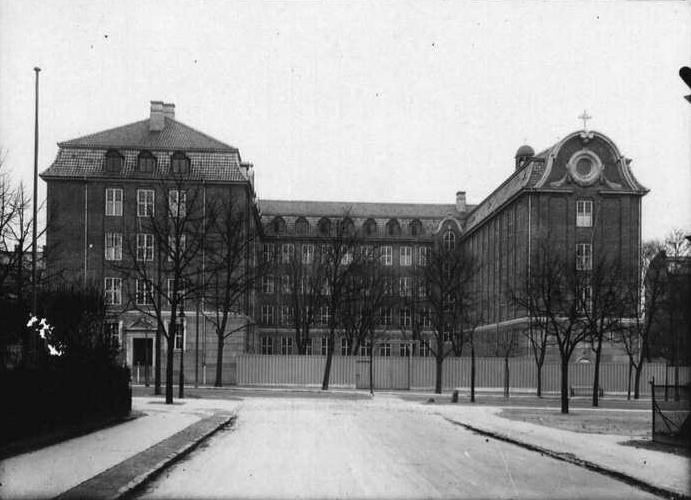 | ||
Institut jeanne d arc
The Institut Jeanne d'Arc, also Den Franske Skole, was a French-language Roman Catholic school at 74 Frederiksberg Allé in the Frederiksberg district of central Copenhagen, Denmark. Established in 1924, it was accidentally bombed by the Royal Air Force on 21 March 1945 causing the death of 86 children and 18 adults.
Contents
- Institut jeanne d arc
- Kezia rakotomalala institut jeanne d arc
- History
- Accidental bombing
- Aftermath
- References
Kezia rakotomalala institut jeanne d arc
History
Designed by the Danish architect Christian Mandrup-Poulsen (1865–1952), the school was established on 1 August 1924 by the Danish Sisters of St. Joseph who arrived in Denmark in 1856. They had already established another school, the Institut Sankt Joseph in the Østerbro district of Copenhagen in 1858. The three-winged red-brick building, consisting of four storeys and a mansard, housed 29 classrooms.
Accidental bombing
On 21 March 1945, in response to a request by the Danish resistance that the Copenhagen Gestapo headquarters should be destroyed, 20 RAF Mosquitos left for Copenhagen on a mission designated Operation Carthage. The target was Shellhuset (The Shell House) on Kampmannsgade in the city centre which housed the Gestapo.
One of the Mosquitos in the first of three waves hit a tall lamppost, causing it to crash into a garage close to the school. Two of the Mosquitos in the second wave mistook the ensuing fire as their target and dropped their bombs on the French School, killing 86 children and 16 adults and wounding 67 children and 35 adults.
Aftermath
The school was destroyed by the bombing and the remaining buildings were demolished. Today, six apartment buildings stand on the site. The remaining pupils were transferred to the Institut Sankt Joseph which was subsequently expanded. In 1953, a monument created by Max Andersen (1892–1972) was erected on the site.
